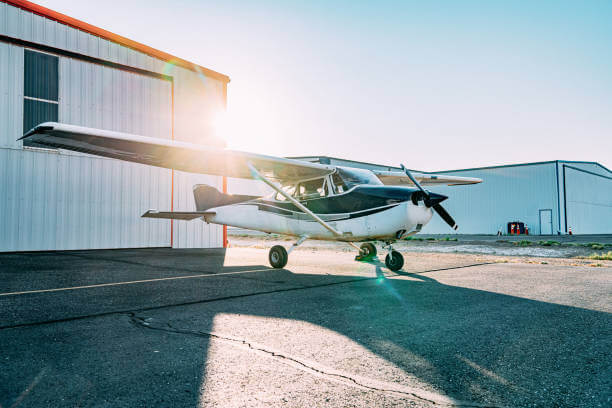How To Protect Your Plane During A Hurricane
Hurricane season, a period of heightened weather turbulence, stretches from June 1st to November 30th. Whether you’re facing a mild tropical storm or a formidable category hurricane, it’s paramount to have a well-thought-out hurricane plan for your cherished aircraft.
Here, we present three options to contemplate when crafting a hurricane plan for your aircraft. Ideally, having your plan in place before any impending weather disturbances approach your region is prudent. Regardless of your chosen strategy, ensure that your aircraft’s insurance is up-to-date, and capture comprehensive photographs of both the interior, particularly the avionics panel, and the exterior of your aircraft.
1. **Relocate Your Aircraft**
– To safeguard your aircraft from the destructive forces of hurricane winds, relocating it to an airport well beyond the projected hurricane path is your best course of action.
– Hurricane paths often prove unpredictable, so vigilantly monitor weather updates for path alterations.
– Reach out to a relocation airport as soon as possible. Don’t wait until the last minute, as numerous aircraft owners will be seeking safe havens.
– Arrange for your return home – book a plane ticket or secure a rental car if you plan to return after the storm passes.
– Contact evacuation pilots, preferably before hurricane season begins, in case you are unable to fly your aircraft out.
– If applicable, review your aircraft’s insurance relocation coverage and retain all expense receipts covered by your insurance.
2. **Hangar Your Aircraft**
– If your aircraft isn’t usually hangared, securing an available spot in a hangar as a storm approaches can be challenging.
– Thoroughly inspect the hangar where your aircraft will be sheltered during the storm. A weak or poorly constructed hangar collapsing onto your aircraft could cause more damage than leaving it unhangared.
3. **Tie Down Your Aircraft**
– Unless your aircraft is deemed non-airworthy, it is highly recommended to avoid tying it down during a hurricane. However, if tying down is the only viable option, take the following precautions to minimize potential damage:
– Consult with your Fixed Base Operator (FBO). They likely have established hurricane procedures and requirements.
– If possible, choose a tie-down location that is upwind from other aircraft. Keep in mind that wind direction may change as the hurricane progresses.
– Remove all Foreign Object Debris (FOD) from the vicinity, as even the smallest debris can become a dangerous projectile during the storm.
– Secure all doors and windows. If you have covers for your aircraft, use them securely to withstand hurricane-force winds. Avoid any loose hanging items that could damage the aircraft.
– Set the aircraft’s parking brake if your aircraft’s Pilot’s Operating Handbook (POH) permits and your FBO approves.
– Utilize chocks and deflate the tires.
– Install internal and external gust locks to prevent control surface movement. In case tie-downs fail, gust locks will help keep the aircraft grounded.
– Ensure tie-down ropes or chains are in excellent condition. Replace damaged ropes with nylon or Dacron rope, avoiding manila rope. Use tie-down rings, never struts, and secure them with a bowline knot at approximately a 45-degree angle from the ground. Weighted anchors or cement should be heavy enough to withstand hurricane-force winds if used to secure the aircraft on the ground.
Please be aware that most FBOs do not assume responsibility for storm-related aircraft damage. Once your aircraft is stored in a hangar before the storm, it should remain there, as last-minute departures pose significant risks to FBO staff, your aircraft, and other customers’ aircraft.
In the spirit of community, we encourage all passionate aviators to take these precautions to protect their aircraft during hurricane season. Safe skies and smooth landings!
READ MORE ARTICLES LIKE THIS INSIDE THE MEMBERS PLATFORM
As an E3 Aviation member, you get access to TONS of informative aviation articles and content. Sign Up or Log In today and enjoy all of the tools, resources, product discounts, community and entertainment that E3 Aviation Association offers.

